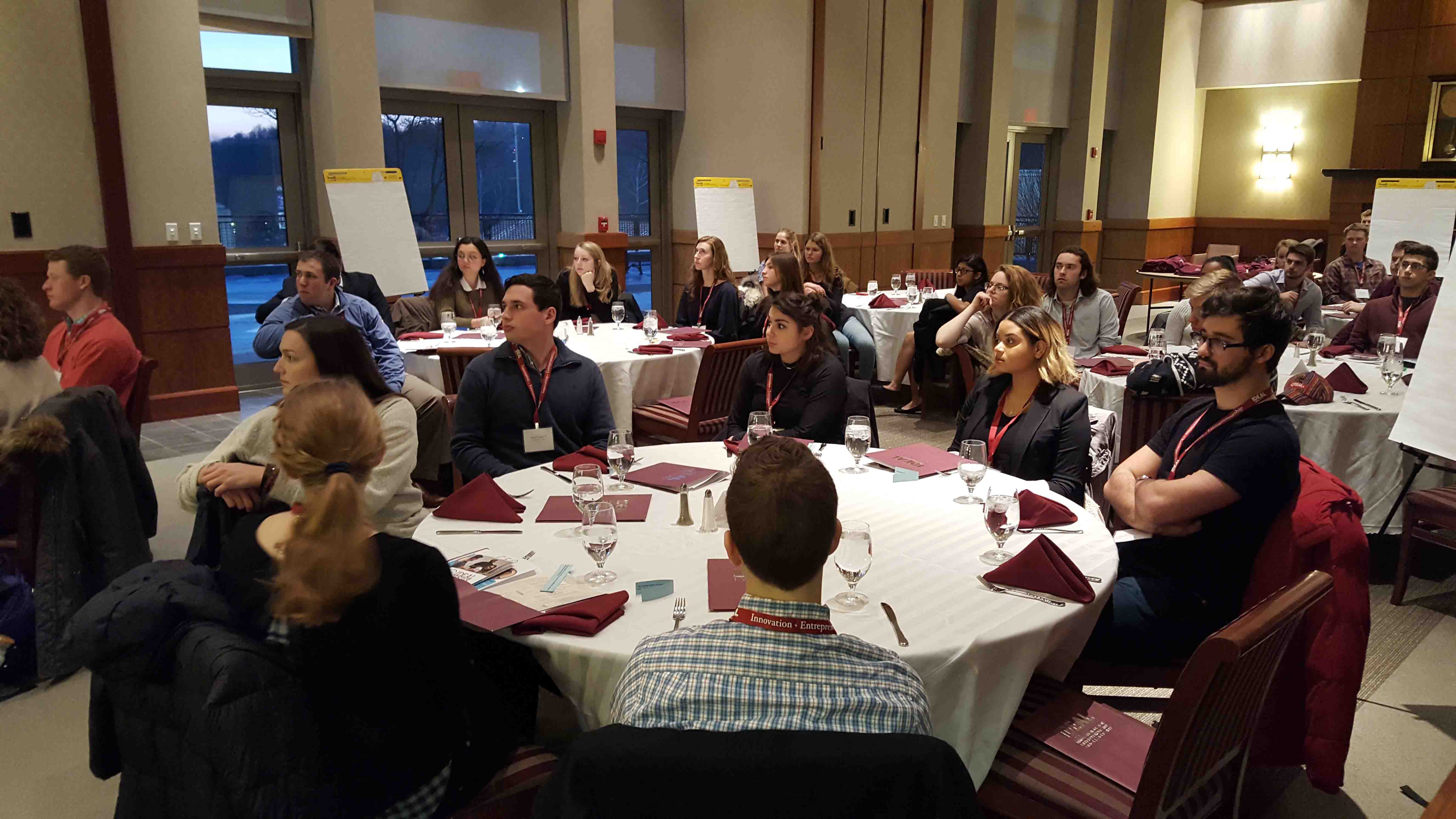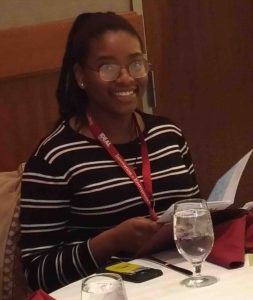By Stephen Wilson
It’s Thursday night, and pop music echoes throughout the hallways of Pfenning Alumni Center. The Wilson Room is set for dinner; the guests are student leaders from around campus—athletics, clubs, student organizations, and Greek life.
Each leader is trying to find his or her table for the plated meal. But rather than simple table assignments, all are holding a fact about a well-known entrepreneur:
This entrepreneur spilled sulfuric acid on the floor, which leaked through the floor and spilled onto his boss’s desk. He was dismissed from his job the following morning.
This entrepreneur’s creation was rejected 12 times by “expert talent seekers” in the field.
This entrepreneur was fired from one of his first jobs because he “lacked imagination and had no good ideas.”
 Each student has to match his or her fact with the name of an entrepreneur printed on a folded place card at the center of each table. Some students are already in seats, but many are trying to figure out where their fact places them for the evening:
Each student has to match his or her fact with the name of an entrepreneur printed on a folded place card at the center of each table. Some students are already in seats, but many are trying to figure out where their fact places them for the evening:
Table: Thomas Edison
Table: J.K. Rowling
Table: Walt Disney
The night is already off to an unexpected start. More unexpected? Each table has a whiteboard.
Whiteboards are par for the course for Yusuf Dahl and his fellows from the IDEAL Center.
They are sharing their message with influencers on campus, drumming up innovators and entrepreneurs who need support.
The first hurdle in that work is helping people recognize they are innovators and entrepreneurs—thus the whiteboards.
 Dahl thanks the guests for coming and recognizes them for their commitment to the College—the time and energy they offer toward improving the community. He then tees up the exercise they’ll complete as they eat: to list challenges they face as leaders at the College.
Dahl thanks the guests for coming and recognizes them for their commitment to the College—the time and energy they offer toward improving the community. He then tees up the exercise they’ll complete as they eat: to list challenges they face as leaders at the College.
Soon whiteboards are full with big and small issues: being authoritative around friends, the fear of failure, and attracting new team members.
Then, to go along with the theme of the evening, Dahl does the unexpected: He moves the whiteboards among the seven tables.
“Help solve someone else’s problem,” he instructs. “Imagine that there are no resource limitations either. You can have anything you need to solve the problem.”
Each table digs in and makes long lists of suggestions, advice, and ideas. Then each table presents its solutions.
More importantly, the students get a small sample of how IDEAL works: collaborative thinking, interactive events, and student-focused.
“I really enjoyed this evening because I was able to connect with smart, driven students and learn about their experiences,” says Tali Dressler ’19 from the women’s lacrosse team. “It was also interesting to learn about what the IDEAL Center does.”
Adam Rosen ’18, co-president of Investment Club, agrees. “I thought this was a great event, seeing student leaders on campus come together to solve problems and improve involvement on campus. I am really excited to see how the IDEAL Center grows in the weeks to come.”
 Each student has to match his or her fact with the name of an entrepreneur printed on a folded place card at the center of each table. Some students are already in seats, but many are trying to figure out where their fact places them for the evening:
Each student has to match his or her fact with the name of an entrepreneur printed on a folded place card at the center of each table. Some students are already in seats, but many are trying to figure out where their fact places them for the evening: Dahl thanks the guests for coming and recognizes them for their commitment to the College—the time and energy they offer toward improving the community. He then tees up the exercise they’ll complete as they eat: to list challenges they face as leaders at the College.
Dahl thanks the guests for coming and recognizes them for their commitment to the College—the time and energy they offer toward improving the community. He then tees up the exercise they’ll complete as they eat: to list challenges they face as leaders at the College.